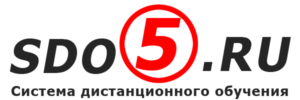U.S. Bank recently introduced a brand new loan product that is small-dollar. Because of the lender’s own description, it is a high-cost item, at 70-88% APR.
High-cost loans by banking institutions provide a mirage of respectability. A component with this impression could be the misguided indisputable fact that restricting payment size to 5% of revenues means the mortgage is affordable for many borrowers. But these services and products may be unaffordable for all borrowers and erode protections from ultimately predatory financing over the board.
A couple of years ago, a number of banks had been making interest that is triple-digit, unaffordable pay day loans that drained consumers of half a billion bucks per year. Amongst their numerous victims ended up being Annette Smith, a widow whom relied on Social protection on her behalf earnings. Annette testified before Congress of a Wells Fargo “direct deposit advance” for $500 that cost her almost $3,000. Pay day loans are appropriately described as “a living hell.”
Annette’s experience ended up being hardly an aberration. Over 50 % of deposit advance borrowers had a lot more than ten loans yearly. Also, deposit-advance borrowers had been seven times more prone to have their reports charged down than their counterparts whom would not simply just just take down these loans.
However the banking institutions setting these debt traps dug in, defending them staunchly until regulators’ 2013 ability-to-repay directions finally resulted in one notable exception to their discontinuance, Fifth Third, which will continue in order to make balloon-payment payday advances.
Today, the danger of widespread high-cost loans looms big once once again — not too much by way of certainty that is regulatory to a deregulatory environment that is proven desperate to respond to the siren track for the bank lobbyists.
Late year that is last brand new leadership in the office regarding the Comptroller for the Currency rescinded the guidance which had precipitated the finish to financial obligation trap balloon-payment loans from Wells Fargo, U.S. Bank among others. Plus in might, the agency granted installment loan recommendations without sufficient guardrails around ability-to-repay or cost. The Federal Deposit Insurance Corp. and Federal Reserve officials are under intense pressure to adhere to suit. The National Credit Union Administration can be considering a dangerous program that is new opposed by many people teams, which could facilitate limitless flipping of short-term high-cost loans, along with unaffordable longer-term loans.
Meanwhile, customer, civil legal rights www.yourinstallmentloans.com/installment-loans-ok and faith teams around the world have actually proceeded to sound strong opposition to bank financing more than 36% APR, registering issues with regulators and banking institutions alike.
But U.S. Bank has stepped through the doorway exposed by the OCC by announcing its product “Simple Loan,” a three-month installment loan as high as $1,000 at an APR that could be illegally full of approximately 31 states plus D.C. if produced by a nonbank lender. Their price can also be unpopular. As an example, even a lesser price of 60% is regarded as way too high by an impressive 93% of North Carolina voters.
A supposed protect regarding the U.S. Bank item is restricting monthly premiums to 5% of gross month-to-month earnings. But information merely try not to help that this metric — which shows a puzzling neglect for the costs of economically troubled consumers — is a meaningful affordability standard for high-cost loans. In reality, government research on multiple million loans discovered default rates in excess of 38% at payment-to-income ratio of 5% or less.
Good sense does not either support this notion. Payday borrowers have quite low incomes, are generally currently overburdened by credit, and also have credit that is average when you look at the low 500s. And history has revealed us that, instead than replacement for other high-cost items, extra high-cost loans push already constrained borrowers further into unsustainable financial obligation.
Pay day loans, including deposit advance loans, haven’t been shown to reduce overdraft costs. In fact, pay day loans are regularly demonstrated to trigger overdraft charges.
Likewise, whenever banking institutions had been making deposit advance loans at cost points of half or two-thirds that of storefront lenders, with yearly level of $6.5 billion (almost all of it, like storefront pay day loan volume, produced by the prior unaffordable cash advance), there clearly was no proof which they place a dent in nonbank payday lending.
High-cost installment loans additionally often enhance debt that is already unsustainable. A default or delinquency occurred in 23% of all 2016 loans in Colorado, where installment loans average 129% APR. Even though the loans are paid back, focus team participants here describe just how these loans usually compounded their currently unmanageable debt burdens.
Hence, we realize of no proof suggesting that high-cost bank installment loans will decrease nonbank lending that is payday. They are doing, nevertheless, threaten a battle to your base as nonbank loan providers will look for to loosen state usury laws and regulations to “compete” with banking institutions.
Banking institutions and credit unions do not require unique passes to make fairly priced loans. Numerous depositories make affordable installment loans, and around 650 credit unions provide beneath the present guidelines for the NCUA payday alternative loan system. There are additionally 76 million subprime that is open cards, up steadily because it had been 59 million in 2012.
The principle that is key this: Credit should be affordable, or it harms a lot more than it will help. And intensely high rates of interest on loans to economically susceptible customers may not be justified as everyday pricing that is risk-based. The prices, alternatively, really are a red banner signaling an enterprize model maybe not according to capacity to repay. Banking institutions making loans through checking accounts have the added leverage of keeping the consumer’s banking account. This might relieve their capability to benefit down loans, no matter if they leave borrowers without sufficient money to satisfy needs that are basic.

Оставить комментарий